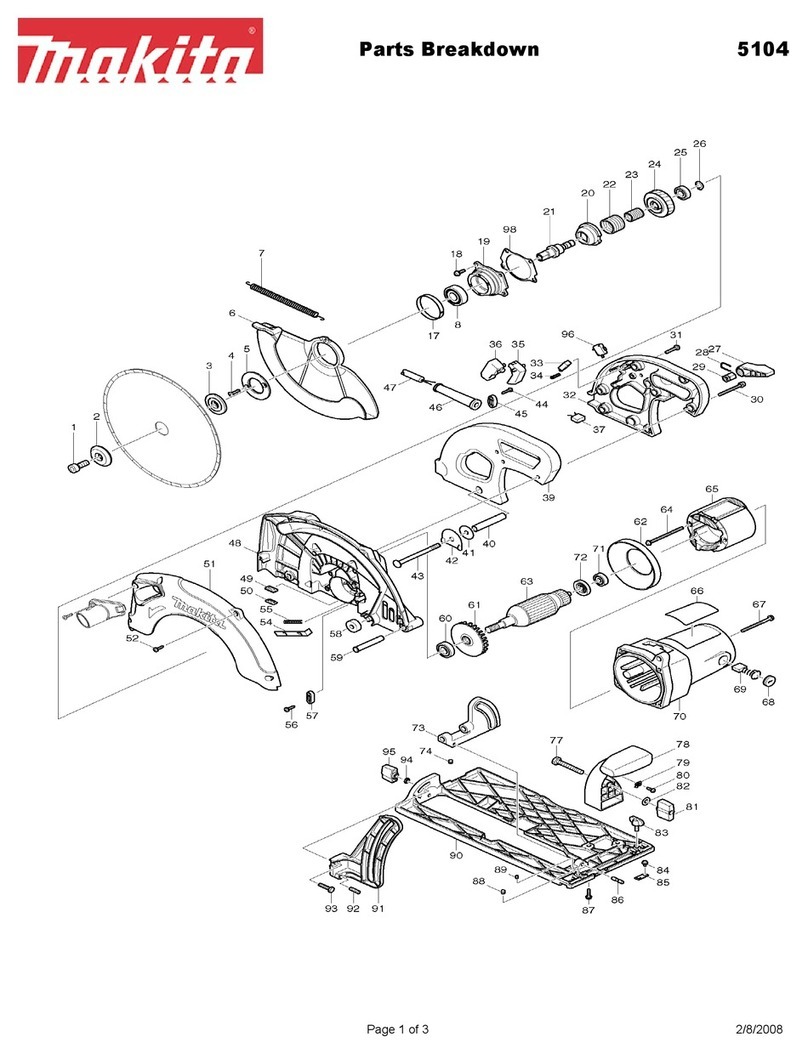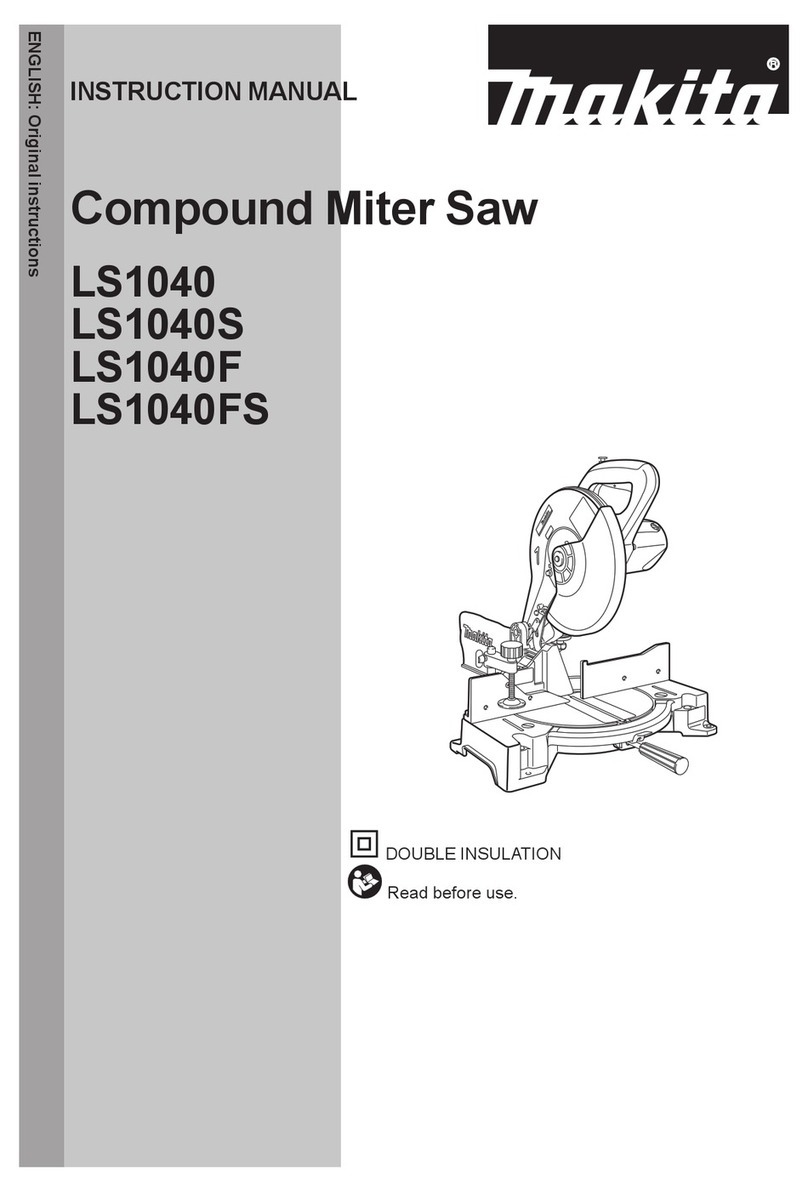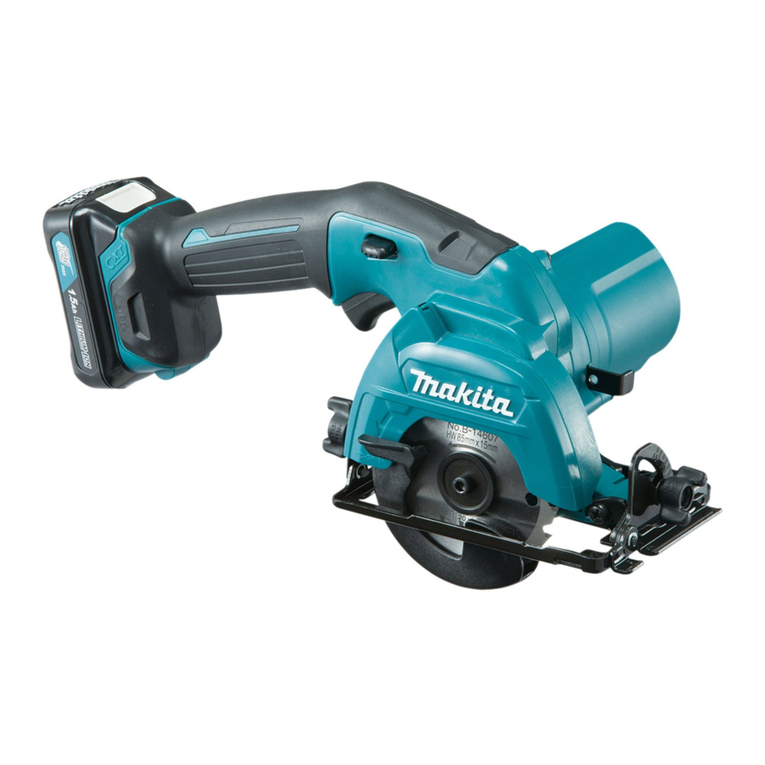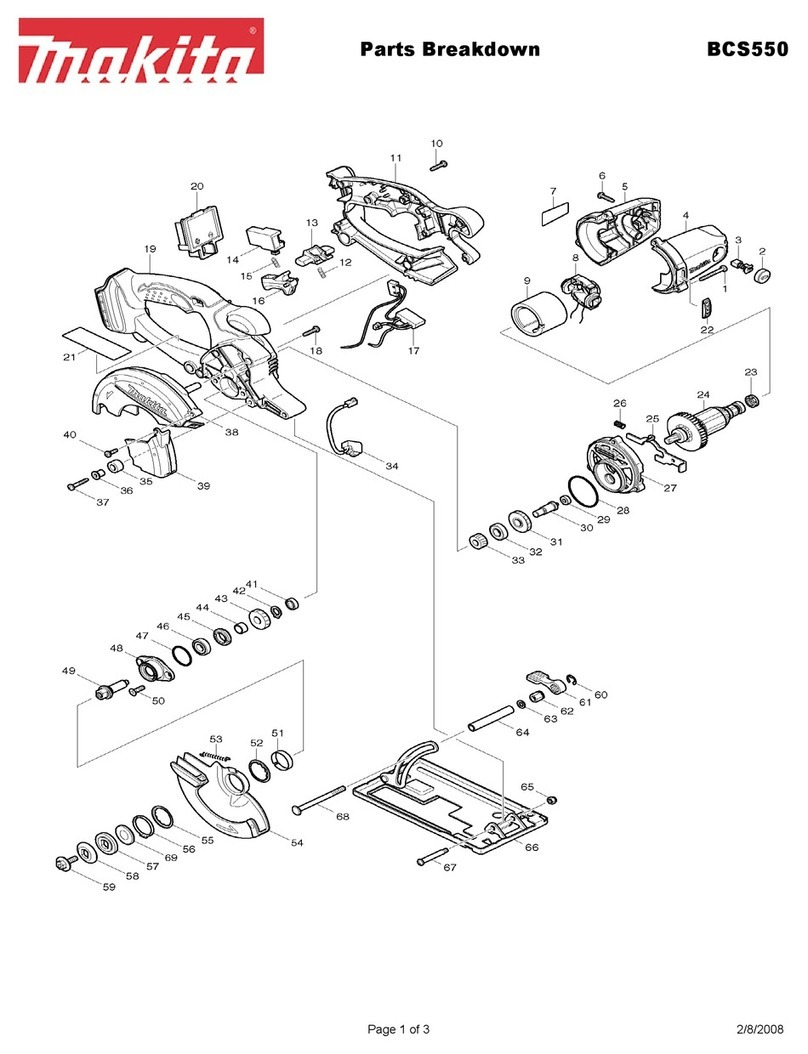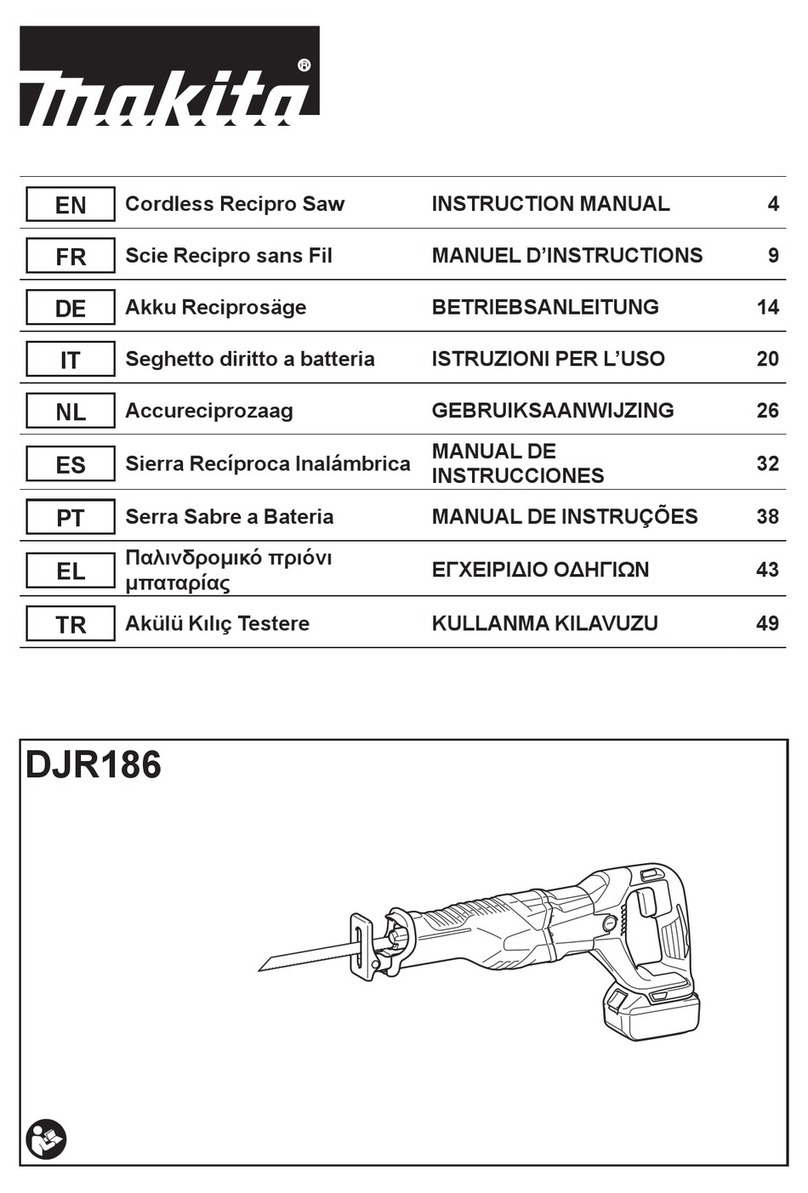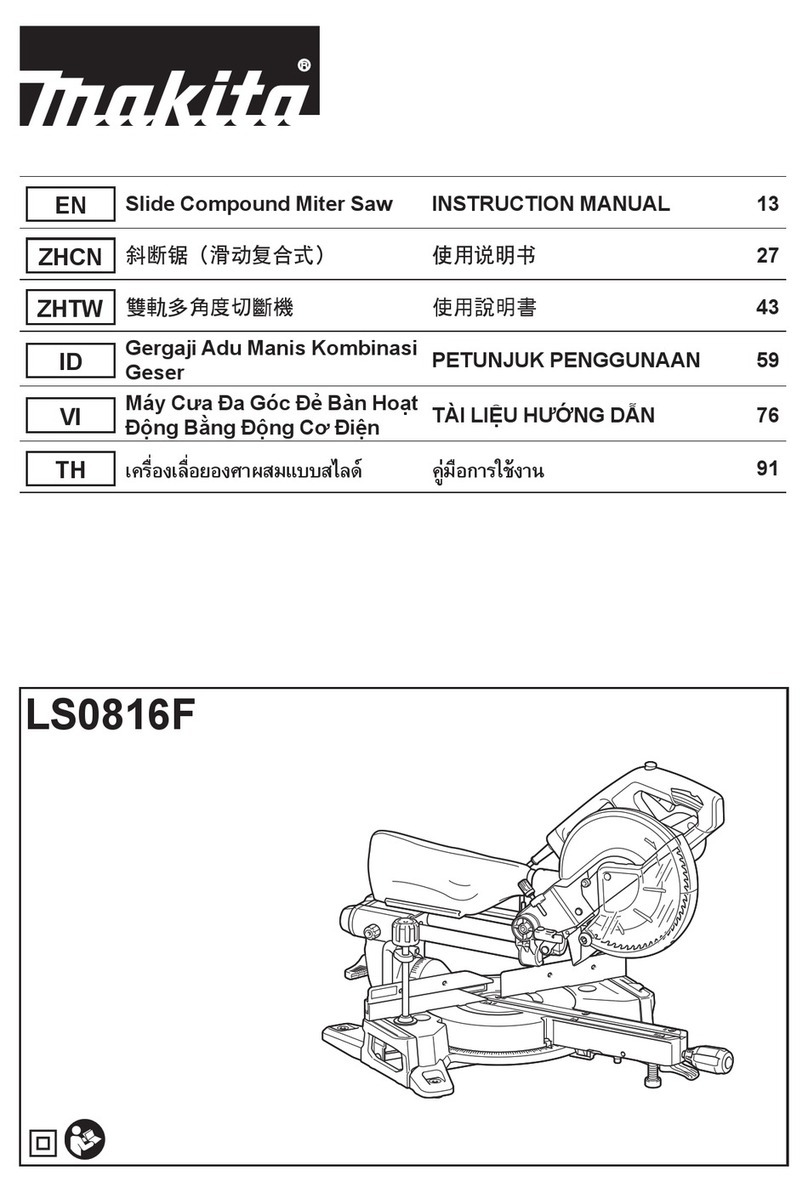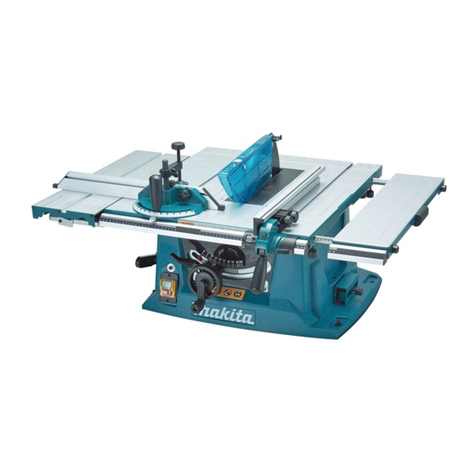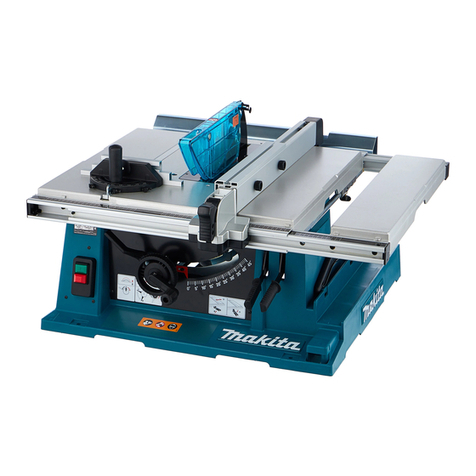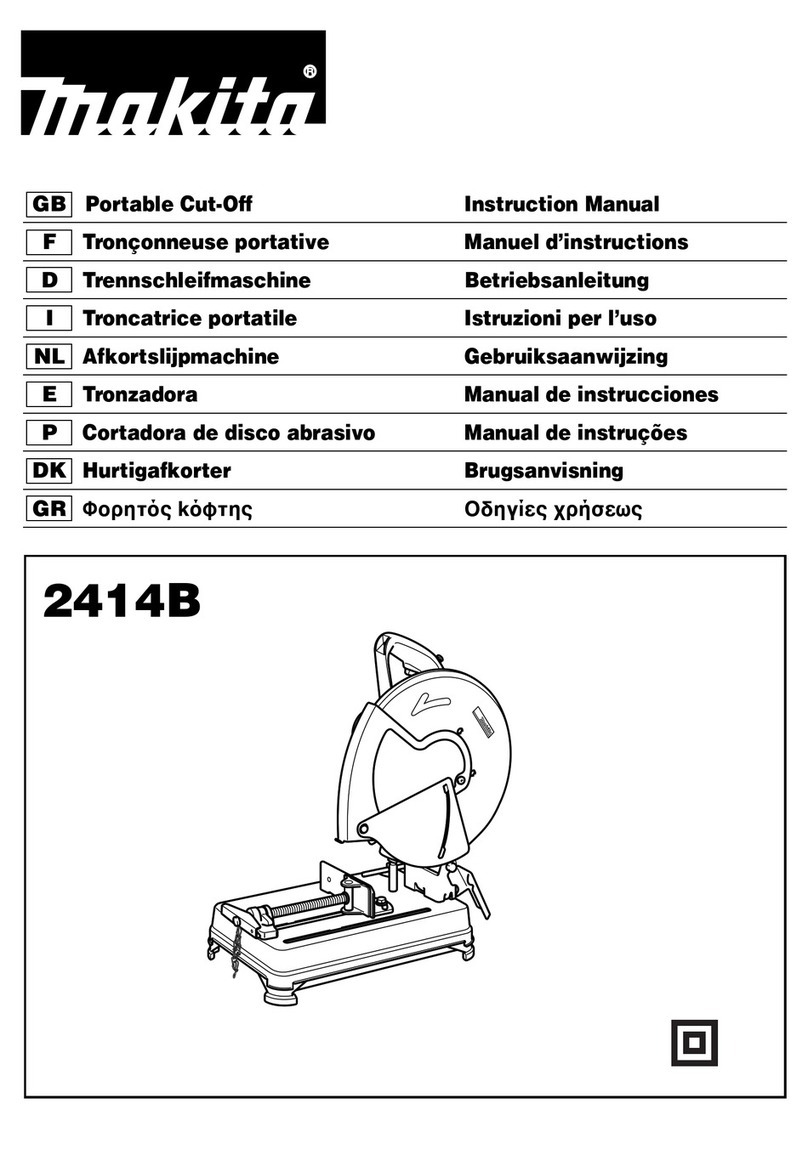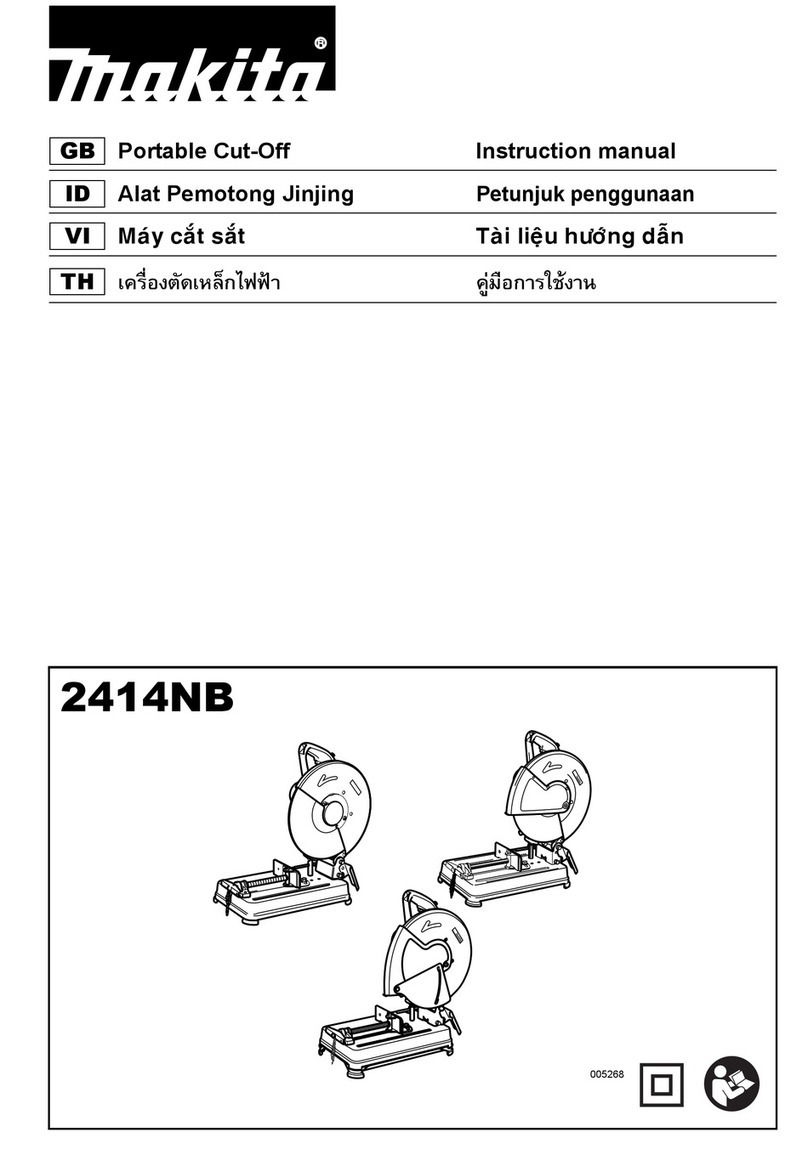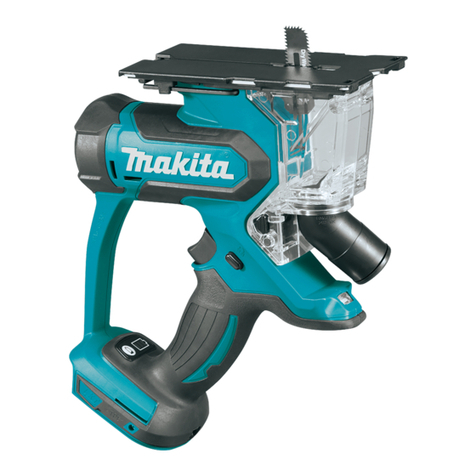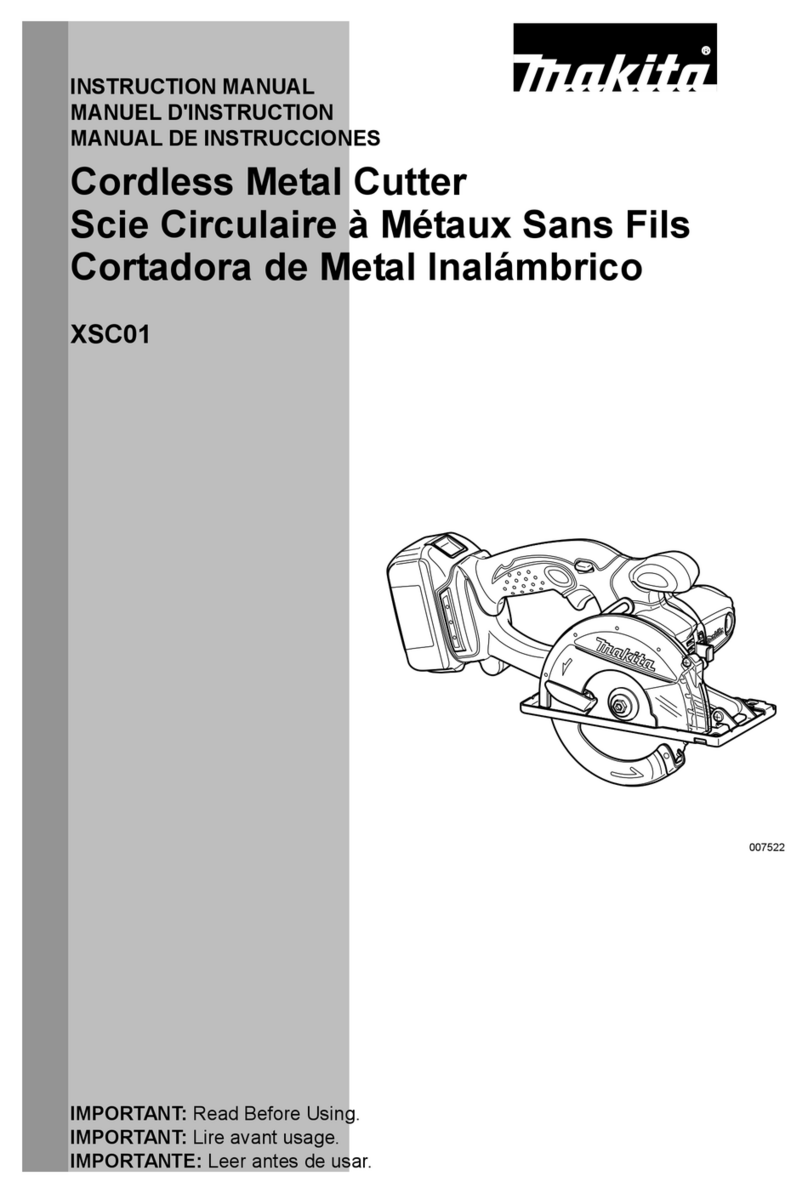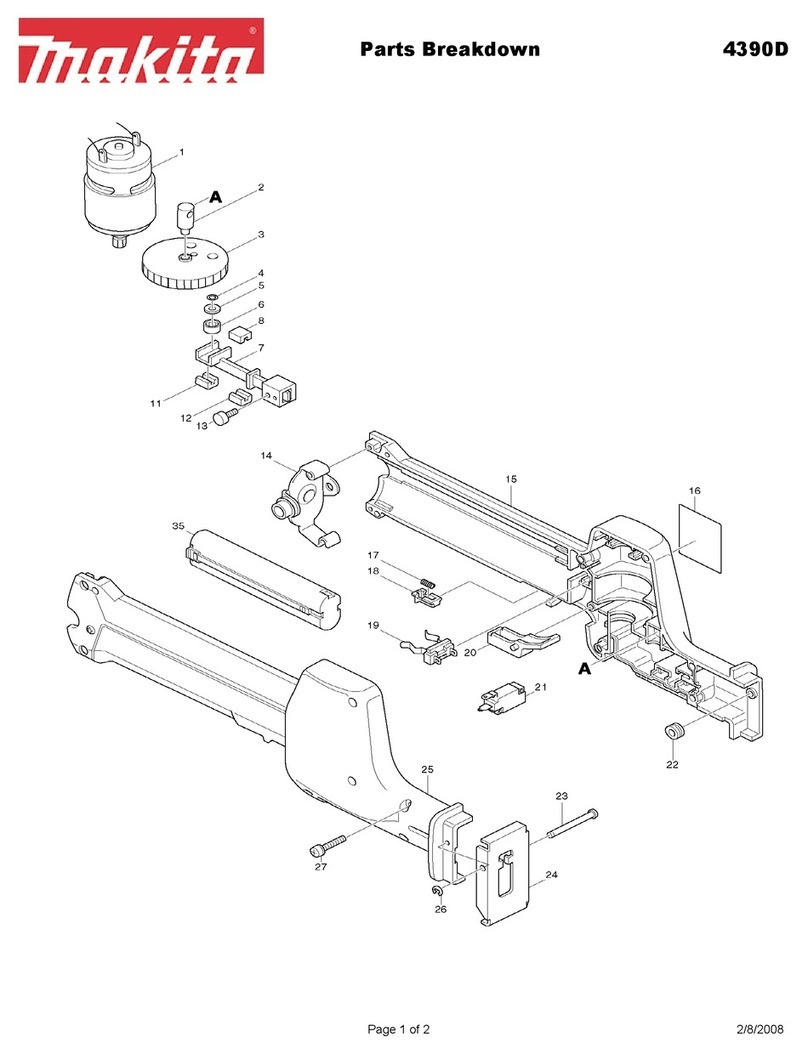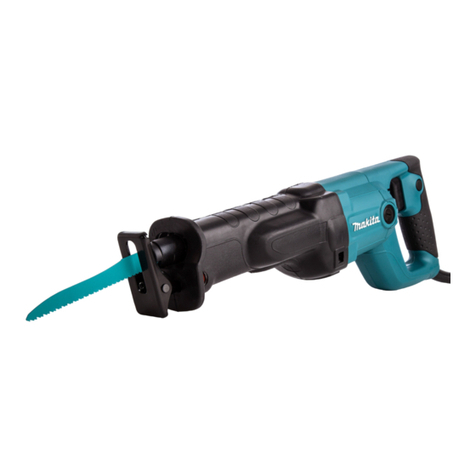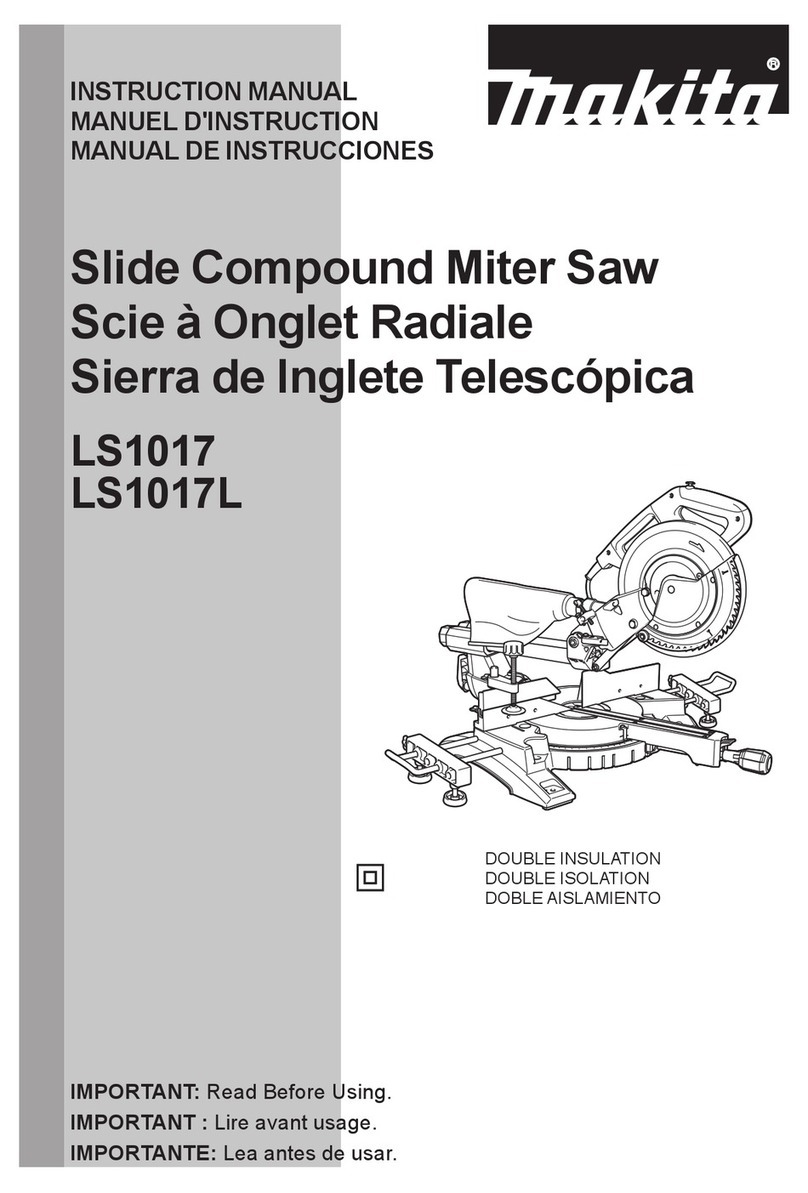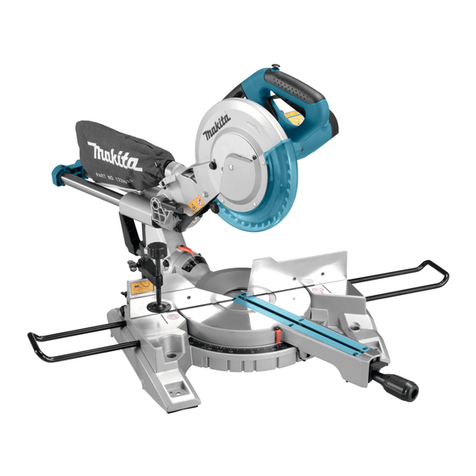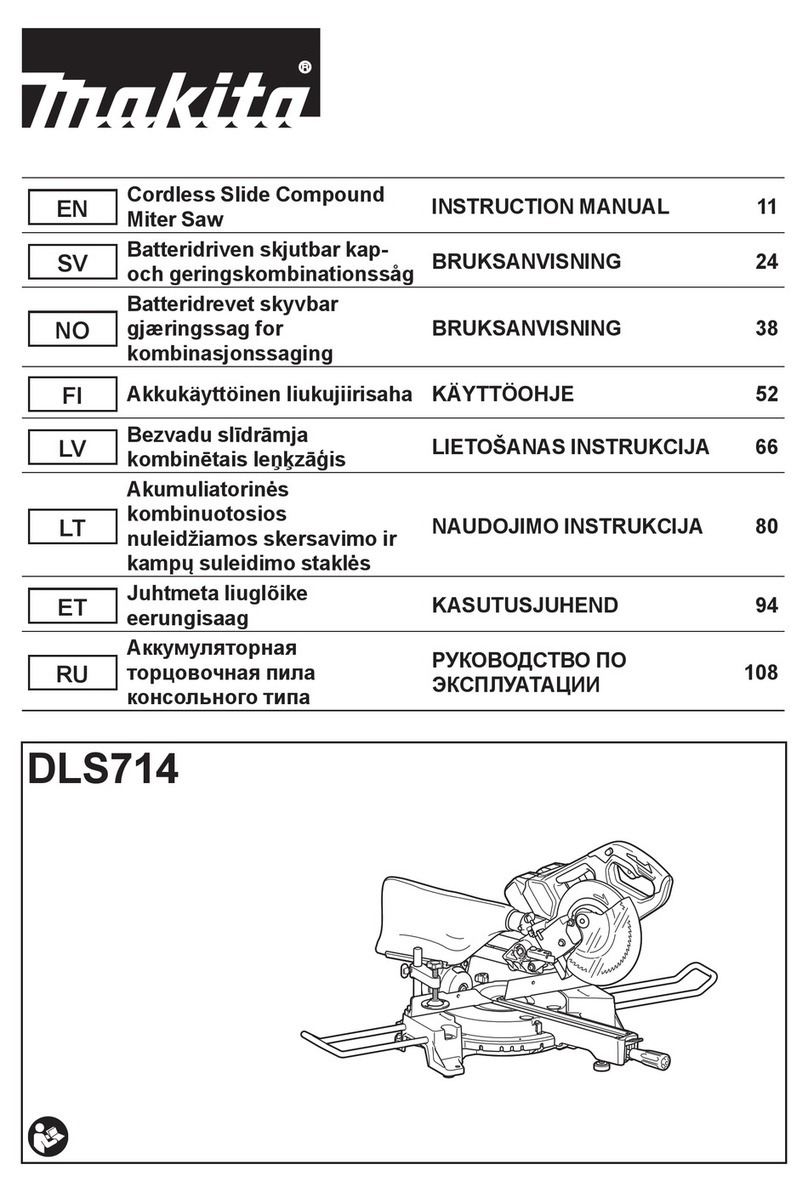IMPORTANT SAFETY INSTRUCTIONS
FOR CHARGER
&
BATTERY CARTRIDGE
1.
SAVE THESE INSTRUCTIONS
-
This manual
contains important safety and operating instructions for battery charger.
2. Before using battery charger, read all instructions and cautionary markings
on
(1
1
battery charger,
(21
battery, and
(3)
product using battery.
3.
CAUTION
-
To
reduce riskof injury, charge only MAKITA Battery Cartridge
7000, 7001, 7002, 7033, 7100, 7120,
9000,
9001,
9002,
9033,
9100,
9101,9102,9120,9122,9133,1200,1201,1202,1210,1211,1222,1233,
1422,1433,1822,1833,9101A.
9102A. 1201A or 1202A. Other typesof
batteries may burst causing personal injury and damage.
4.
Do not expose charger to rain or snow.
5.
Use of an attachment not recommended or sold by the battery charger
manufacturermay result
in
a risk of fire, electric shock, or injury topersons.
6.
To
reduce risk of damage to electric plug and cord, pull by plug rather than
cord when disconnecting charger.
7. Make sure cord islocated
so
that
it
will not be stepped on, tripped over, or
otherwise subjected to damage or stress.
8.
An extension cord should not be used unless absolutely necessary. Use of
improper extension cord could result
in
a risk of fire and electric shock.
If
extension cord must be used, make sure:
a. That pinsonplugof extensioncordare thesame number, size, andshape
b. That extensioncord isproperlywiredandingoodelectrical condition; and
c.
That wire size is at least as large as the one specified
in
the table below.
TABLE
1
RECOMMENDED MINIMUM AWG SIZE
FOR
EXTENSION CORDS
FOR
BATTERY CHARGERS
I
Length
of
Cord (Feet)
I
25
I
50
I
100
I
150
I
as those of plug on charger;
I
AWG Sizeof Cord
1
18
I
18
I
18
I
16
I
9.
Do not operate charger with damaged cord or
plug
-
replace them im-
mediately.
IO.
Do
notoperatechargerif
it
hasreceiveda sharpblow, beendropped, or other-
wise damaged
in
any way; take
it
to a qualified serviceman.
11.
Do not disassemble charger or battery cartridge; take
it
to a qualified
serviceman when service or repair is required. Incorrect reassembly may
result
in
a risk
of
electric shock or fire.
12.
To
reduce risk of electric shock, unplugcharger from outlet before attempt-
ingany maintenance or cleaning.Turning off controls will notreducethis risk.
6

